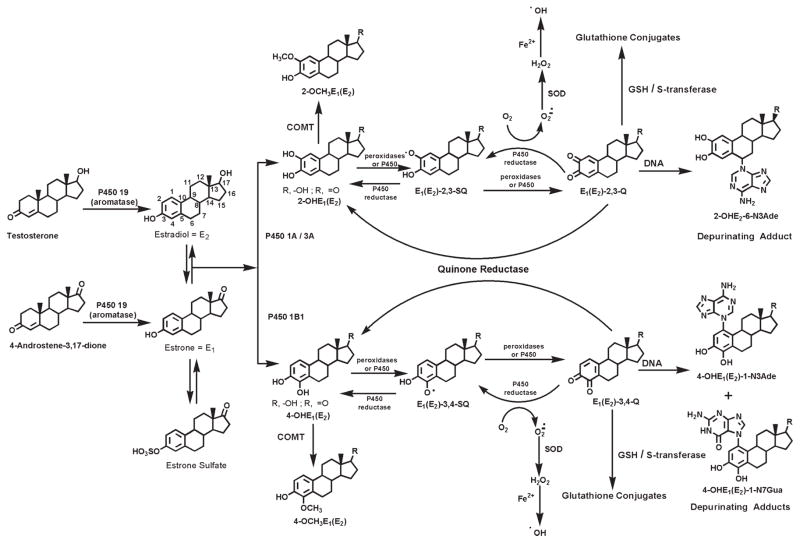FIGURE 1.
Biosynthesis and metabolic activation of the estrogens, E1 and E2. The metabolic activation of E1 and E2 leads to 2- and 4-catechol derivatives, which further oxidize to yield the corresponding reactive quinones. The quinones react with DNA to form depurinating DNA adducts. In the deactivation pathway, which operates in parallel, the catechol derivatives are methylated to form methoxy catechol estrogens; in addition, the quinones are reduced by quinone reductase, as well as are conjugated with GSH, and, thus, are rendered harmless. The shift in the apparent balance between these activating and deactivating pathways towards formation of depurinating DNA adducts could lead to the initiation of breast cancer.

